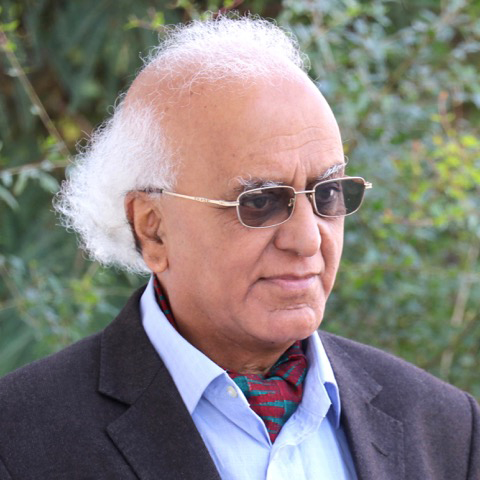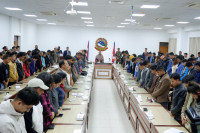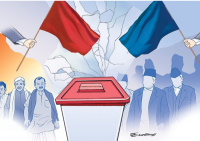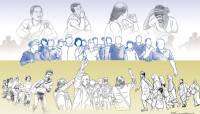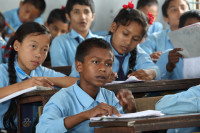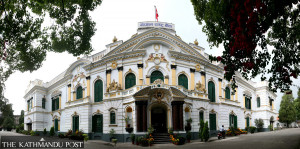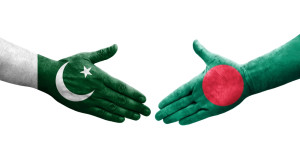Columns
Reimagining art education in Nepal
We should incorporate the tradition of learning art into art pedagogy.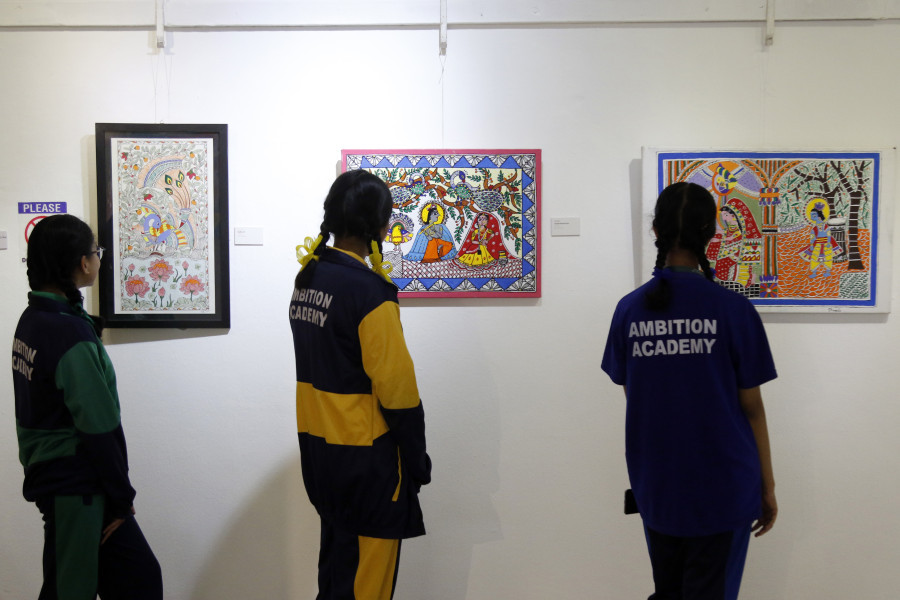
Abhi Subedi
Nepali art is known for its two important features: art pedagogy and its use in life. Correspondingly, we allude to two aspects of art—training and incorporating the acquired skills with other dimensions of life, such as aesthetic enrichment, cultural continuity, application and performativity.
I participated as a panellist on Nepali art pedagogy on February 7, 2025, at the Nepal Art Council, organised by the Lalitkala Campus and the Student Union under the rubric ‘Re-envision Lalitkala’. I will briefly allude to the topics discussed by panellists at the colloquium.
Some 20 graduating student artists exhibited their paintings on diverse themes and styles. It was good to be familiar with the explications of their practice, the experience of acquiring education and free experimentation in artworks, mostly paintings, even though their statements referred to other art forms like sculpture and architecture. I have participated in several such pedagogic occasions and discussions at different times. Various topics are evoked in the works of art students at the Faculty of Arts of Tribhuvan University at Kirtipur, too. Some have been doing advanced research work on different topics of art.
One form of art education that I have always advocated for is interart studies. The curricula of such studies bring the different forms of art and literature together, especially when it comes to developing the methodology of bringing out the shared features of the artworks in a certain form.
The panellists at the colloquium included the music scholar, teacher and art promoter Lochan Rijal; painter and art performer Ashmina Ranjit; and me. The major inquisition that the facilitator, Sharareh Bajracharya, raised in her introduction was the historicity of art education and the structuration of art pedagogy and pedagogues in this country. That can be seen at both the individual and institutional levels.
At the individual level, the artist families of Chitrakars or 'picture makers' bequeathed the tradition of learning and teaching art primarily within the family. Bhajuman Chitrakar was part of the entourage during Jang Bahadur Rana's 1850 visit to Britain. I remember visiting the private gallery of the late Musuri Shumsher Rana alias MK at his house on a hump in the Thapathali area in the eighties, where the portraits of Jang's families executed by Bhajuman Chitrakar and some others were put systematically.
The teaching of art was also practised at an individual level. The art teachers of the earlier generation that I heard and met occasionally were Kali Bahadur Shrestha and Laxman Duwadi. Ramananda Joshi was another artist, younger than them, educated in India; he started a practice of art pedagogy at an individual level. I knew him well and attended programmes at his art teaching space in Ratnapark.
Individual teaching and learning of art have a strong and meaningful tradition in Nepal that coheres with the traditions of the Chitrakars as mentioned above as well as those of the artists trained in Calcutta like Chandra Man Maskey and Tej Bahadur Chitrakar. This tradition also includes more recent painters like Uttam Nepali, Ragini Upadhyay, Sashikala Tiwari, Kiran Manandhar, and SKIB artists—the acronym of Shashi Shaha, Krishna Manandhar, Indra Pradhan and Batsagopal Vaidya. Most of the SKIB artists were dedicated teachers and principals in art colleges. Madan Chitrakar and Sujan Chitrakar are both pedagogues and practising artists. Sujan Chitrakar leads the Faculty of Arts at Kathmandu University.
The subject of art pedagogy is featured in the history of art in Nepal. The art schools and colleges have a short history. Take Lalitkala school. It was established during the time of the Rana Prime Minister, Bir Shumsher, in 1894. Nepal Art School was established in 1935. The name of Master Chatur Ratna Udas is mentioned in this connection. He had taken up the cudgel to start this school on the ground floor of Tri-Chandra College in 1935. Tej Bahadur Chitrakar, who started teaching art at Durbar High School, cannot be forgotten. He took a leadership role in art education after becoming head of Juddha Art School.
It took many years to establish a modern art school in the country. The Kathmandu University School of Arts was established in 1996. Sirjana College of Fine Arts was established at the beginning of the 21st century, i.e., 2001. The Nepal Academy of Fine Arts, established in 2010, is not a teaching institution. The academy generally does not consider discussions about pedagogy as part of its activities, as it is not supposed to develop models of art education. Art education seems to be featured occasionally in the programmes of famous art galleries. Another notable name that deserves our attention is the Siddhartha Art Gallery, which is run under the leadership of a well-known curator and manager, Sangeeta Thapa.
The history of art pedagogy in Nepal is not very long. The realisation that art is learned at school or college seems to have been established by 1918 when Chandra Man Singh Maskey was summoned to Singha Durbar on a wintry morning to Singha Durbar to meet Prime Minister Chandra Shumsher Rana. Maskey told me he had gone there with some premonitions. But Chandra Shumsher's question, "Do you want to go to Calcutta to learn art?" changed everything. Maskey went, followed by Tej Bahadur Chitrakar the next year and later by Lain Singh Bangdel.
At the colloquium, Lochan Rijal advocated for a holistic art education in Nepal. He thinks art pedagogy should draw energy from the folk and the nativity of creative traditions, and art education should be considered a serious interart practice. Ashmina Ranjit, who gives performative dimensions to her paintings, said art education should be free of entrenched notions like gender prejudices and Brahmanic canonicity. Students' works showed a quest for new and free ways of expression. They make efforts to display original perceptions by using art education and skills.
Similar colloquiums and visualisation of students’ art exhibitions at Kathmandu and Tribhuvan universities have convinced me that we should incorporate the tradition and heritage of learning art into art pedagogy. Like the current practice, history speaks volumes about what Herbert Read's book Education Through Art advocates as the mantra of art education.




 15.12°C Kathmandu
15.12°C Kathmandu